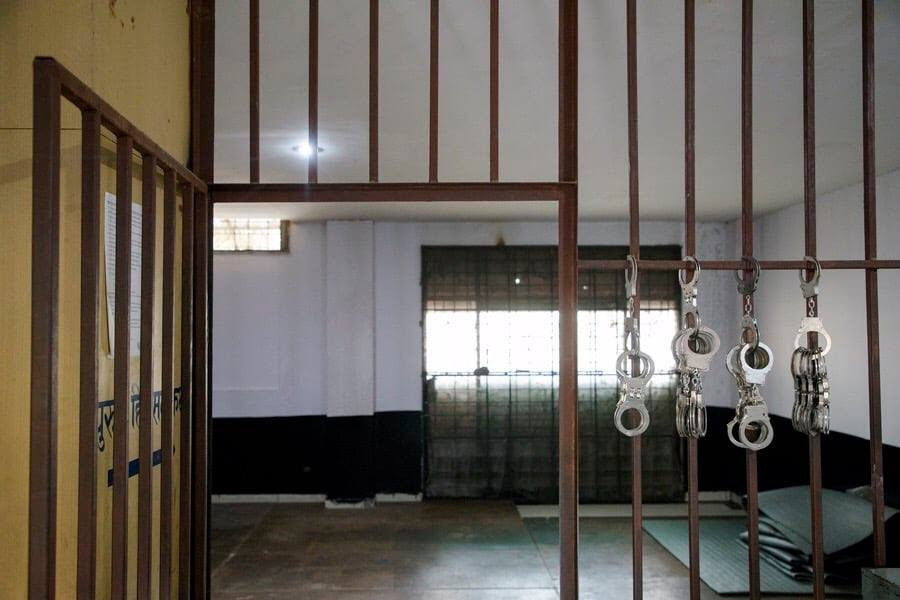Columns
Chaos behind the bars
Overcrowding, drug abuse and violence have always plagued Nepal’s prisons.
Nishant Pokharel
Prisons are many things at the same time. Practically, they are a place of incapacitation; pragmatically, a medium of general deterrence; tacitly, a tool of retribution; and philosophically, a reform home. Prisons are a ubiquitous presence in the contemporary penal world, and Nepal is no exception. The first jail in Nepal was the Sadar Jail, currently known as Central Jail and the largest prison in the country, established in 1971 BS. Among the 77 districts in Nepal, 72 have their prison, with only Kathmandu and Dang having two each. Nepali prisons currently hold about 27,550 prisoners and detainees, a 31 percent increase from 18,811 five years ago. Unfortunately, the investment in infrastructure, human resources and alternative penal systems is dismal, with enormous consequences.
Rigged with problems
Overcrowding, drug abuse and violence have plagued Nepal’s prisons. A month ago, it was found that a jail in Kailali had become a hub for drug abuse, with constant news of prison violence, drug abuse and infrastructural deficiency. What’s more, a news report by Setopati outlined how Kailali Jail’s problem involved the police administration. Likewise, there are frequent reports of riots inside prisons, with instances of alcohol usage and gambling.
Such incidents come as no surprise, as they have major underlying institutional problems. According to the assessment report published by the Office of the Attorney General, almost 25 (among 51 sample jails) have rooms with inadequate to no access to sunlight. Similarly, there are sanitation problems, lack of drinking water, adequate nutritious food and medical assistance. However, the report noted that library and entertainment facilities have improved recently. Most prison inmates are provided with 700 grams of rice and Rs80 daily, which is insufficient. Many jails lack skill-development facilities, special provisions for specially abled individuals, non-heterosexual individuals and elderly citizens. Moreover, they do not have separate visitor rooms as required by section 17 of the Prison Act, 2019.
Although the Act provides different facilities to prisoners, they are not available in practice. Take section 22 of the Act, for instance. It requires a medical checkup at least every two weeks. However, a 2018 study titled “Health needs and risky behaviours among inmates in the largest prison of eastern Nepal”, conducted in Jhumka Regional Prison of eastern Nepal, found that among 434 participants, 84 percent were suffering from health problems. The paper also suggests “a need for medical, psychiatric and substance abuse care in correctional settings to improve the health status of the prison population.” It further outlines the need to segregate blood-borne viral and other infectious diseases in prison.
In addition to basic facilities for prisoners, Nepal’s legal scenario also provides alternatives to the prison penal modal. Section 41 of the Prison Act has “open prison” provisions. The Act defines such a prison as “any place specified by the Government of Nepal in a manner that a prisoner may work during the specified time even outside of the place where he or she is held.” Similarly, section 38 of the Criminal Offences (Sentencing and Execution) Act-2017 provides for the Probation and Parole board “to render assistance in the social rehabilitation and integration of the offenders sentenced to imprisonment” headed by the Attorney General, including psychologists. However, these alternative penal provisions are not implemented, adding strains to the country’s criminal justice system.
Issues in implementation
A concept paper published by the Prison Management Department says the government has failed to bring policy and managerial development regarding “implementing a novel penal system.” The paper also says the prison system in the country aims to make “prisons truly a reform-house which can fully reform a prisoner into a responsible citizen with total rehabilitation into the society.” Philosophically, the current penal jurisprudence visions the notion of social citizenship. It refutes the punitive and retributive notion of prisons and aims to make prisons more reformist and progressive. However, far from it, the current prison system has more retributive elements than reformist elements.
The way the general public views crime has also shaped our prison system. The media’s crime reporting has caused the problem of over-criminalisation, over-prosecution and over-sentencing. In fact, crime reporting has no accurate relationship to the distribution of crime. A 1977 study titled “The Representation of Criminal Events in Houston's Two Daily Newspapers” found that crime news and the distribution of crimes reported to police are inversely related. Furthermore, a 1981 article “Crime, Crime News, and Crime Views” found that while only 0.4 percent of cases reported to police in New Orleans were actually homicides, 46-50 percent of all stories covered focused on homicides. This shows a fundamental statistical disparity and exaggeration that has negatively skewed public opinion.
In addition, the reluctance to enforce alternative penal provisions stems from a victim-centric approach to criminal law. While it is absolutely necessary to consider victims’ welfare during the criminal justice system, it is also equally important to encourage the implementation of alternative penal systems. The stakeholders must cautiously enforce alternative penal provisions as enshrined in the law while ensuring victims’ welfare but not the victims’ desire of revenge.
In 1850, American writer Nathaniel Hawthorne suggested that “prison is necessary but not entirely desirable social institution.” He described the prison as a “black tower of civilised society and that prisons are durable weeds that refuse to die.” Even if prisons are necessary, they are not indispensable. Alternative penal provisions exist and should be enforced. The current prison chaos stems from the states’ reluctance to opt for such alternatives. The government should allow alternative penal systems such as probation/community corrections, home confinement/electronic home monitoring and community service. Prions are the norm, but the norms themselves should be changed. And even if prisons are indeed the black towers of civilised society, they still can be substituted with a beautiful flower of reformation and love.




 9.12°C Kathmandu
9.12°C Kathmandu















